There are few Rickenbacker features as confounding to people unfamiliar with the brand as the 4000/4001/4003 bass bridge pickup cover. And to a lot of brand fans too, if we’re being honest. It just gets in the way, right? I mean, what even is the point? Well, I’m gonna tell you. Maybe. Kinda? I dunno…let’s just jump right into it!
So to understand why, we have to start with the very first Rickenbacker bass guitar, the 4000. Here’s what the first iteration looked like from about 1957-1961:
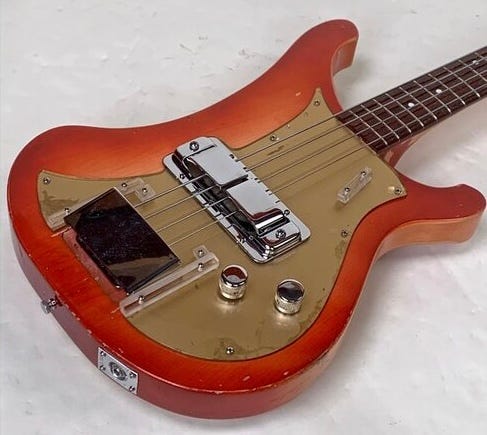
At this point, the pickup “cover” wasn’t a cover, it was an integral part of the horseshoe pickup the guitar sported. Now I strongly recommend you click that link there to learn more about the horseshoe—the world’s first electric guitar pickup—but I’ll give you a quick rundown of the really important stuff to know here. Let’s have a look at the guts of this pickup.
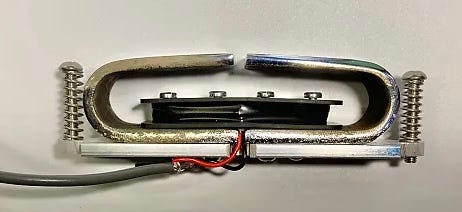
So we have an aluminum base the whole thing is attached to. This is not a functional part of the pickup, it’s just a platform. In the middle we have a very familiar looking wound coil with non-magnetic steel screw polepieces. So…where’s the magnet? The answer is all around the coil. The entire coil is surrounded by two—wait for it—horseshoe shaped magnets. The strings run between the top of the coil and the magnets. Got it? What looked like a split cover in that first pic is actually the tops of the two magnets that power the pickup. Not a cover. Part of the pickup.
Prototypes of the two pickup 4001 began appearing in 1961, with the design being finalized in 1963. And while it got a toaster pickup at the neck, it retained the horseshoe pickup in the bridge position.
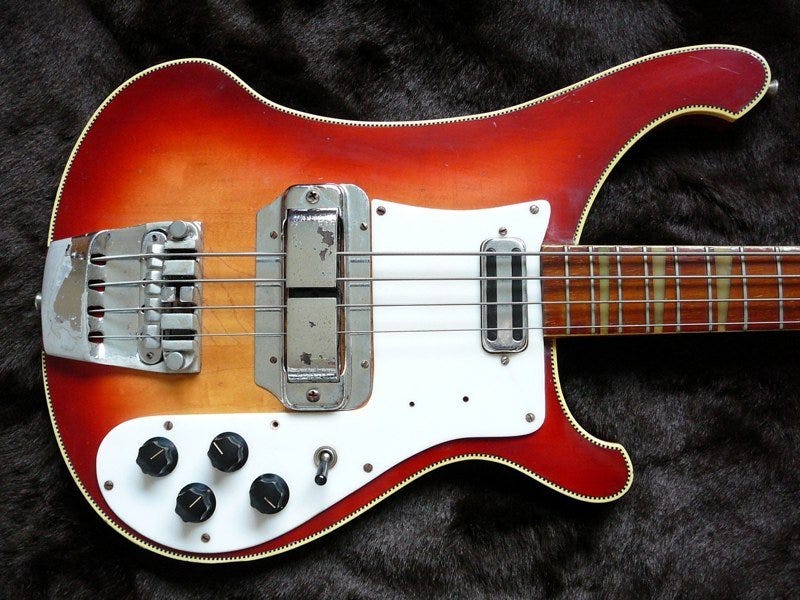
So let’s fast forward to late 1968 when the horseshoe pickup was replaced with the first Higain pickup.
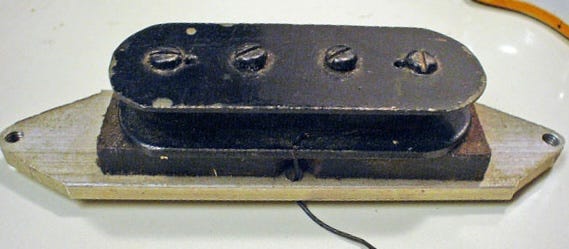
We see the same aluminum base, the same coil with non-magnetic steel screw polepieces, but the horseshoes have been replaced by a rubberized magnet beneath the coil. No more horseshoe magnets. So let’s look at it installed.
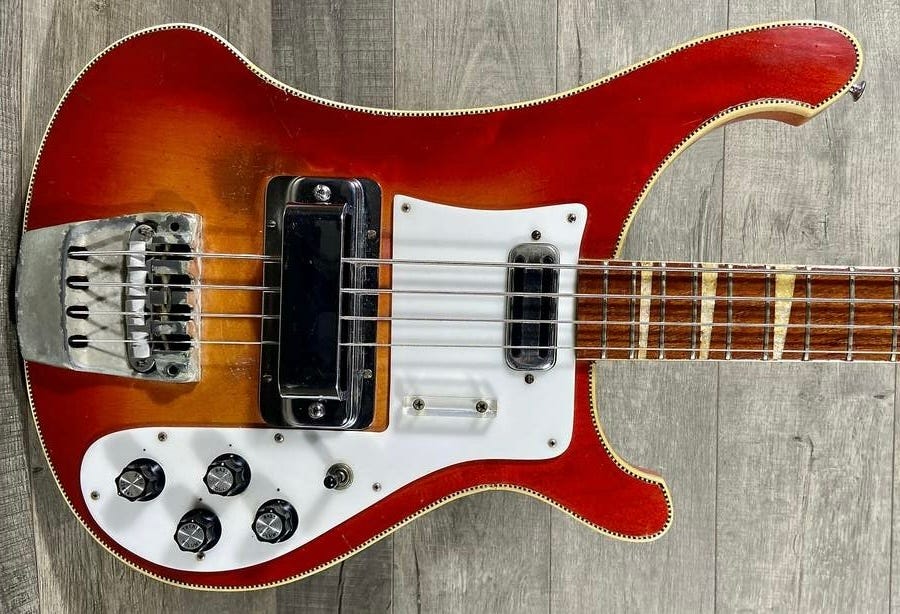
Wait, what? Why? There’s no more horseshoe magnets, so why does it look the same?
Well, let’s remember that pickup covers on basses wasn’t a crazy thing in the early days. Especially given that the very first production electric bass had one.
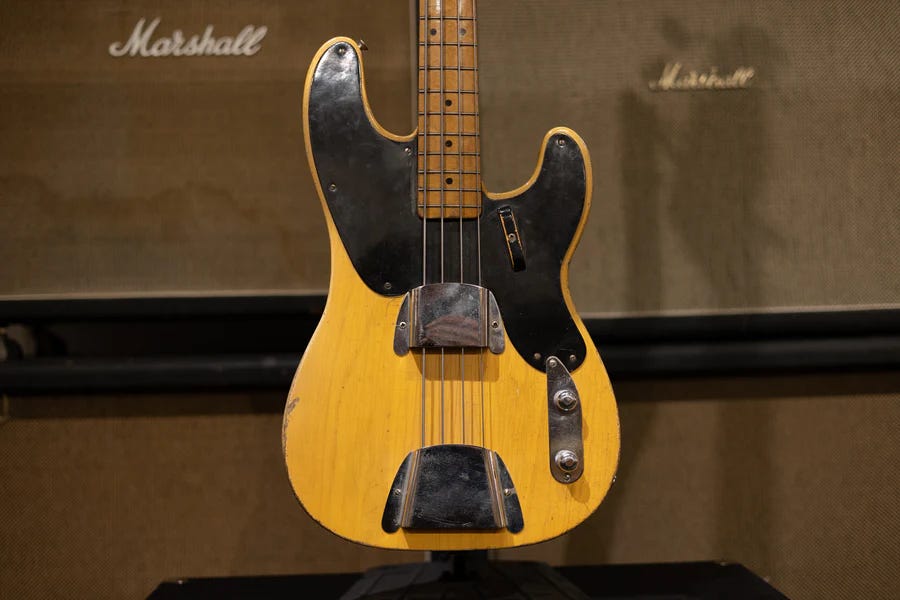
Well that’s in the way too! What was Leo thinking? First you need to remember he didn’t think it would be in the way. He kinda assumed people would pluck the strings with their thumb—that’s what the “tug bar” you find on early basses (including Rickenbackers!) was for: something to hold on to while you played with your thumb. If that’s how you play, the cover is not in the way!
Secondly he thought the pickup was ugly, so covering it up made the guitar look better. Debatable, but OK. But most important, from a functional standpoint, was the theory that it would provide shielding from electromagnetic interference, reducing noise from the pickup. I mean, sounds good on paper I guess?
But here’s the thing: by the time the Higain replaced the horseshoe we knew that basses weren’t being played the way Leo thought they would be. And so even if the cover did provide some shielding—which is questionable—it very much did get in the way of how people were actually playing the bass guitar. And so most people just took the covers off. Fender had in fact already largely phased them out. But not Rickenbacker, by god!
We should probably take a minute to talk about that honking big metal ring around the bridge pickup—commonly referred to the pickup surround. Why is that there?
Well, think back to how big the horseshoe pickup actually was—both in terms of width and height. Look how big the rout to hold it had to be!
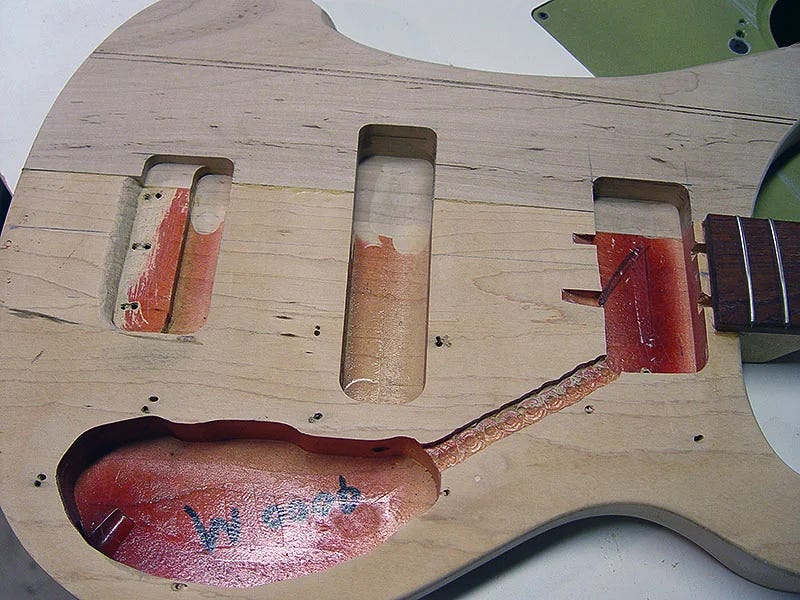
They’d been dealing with how to mount that ridiculously big pickup since the very beginning of the company.
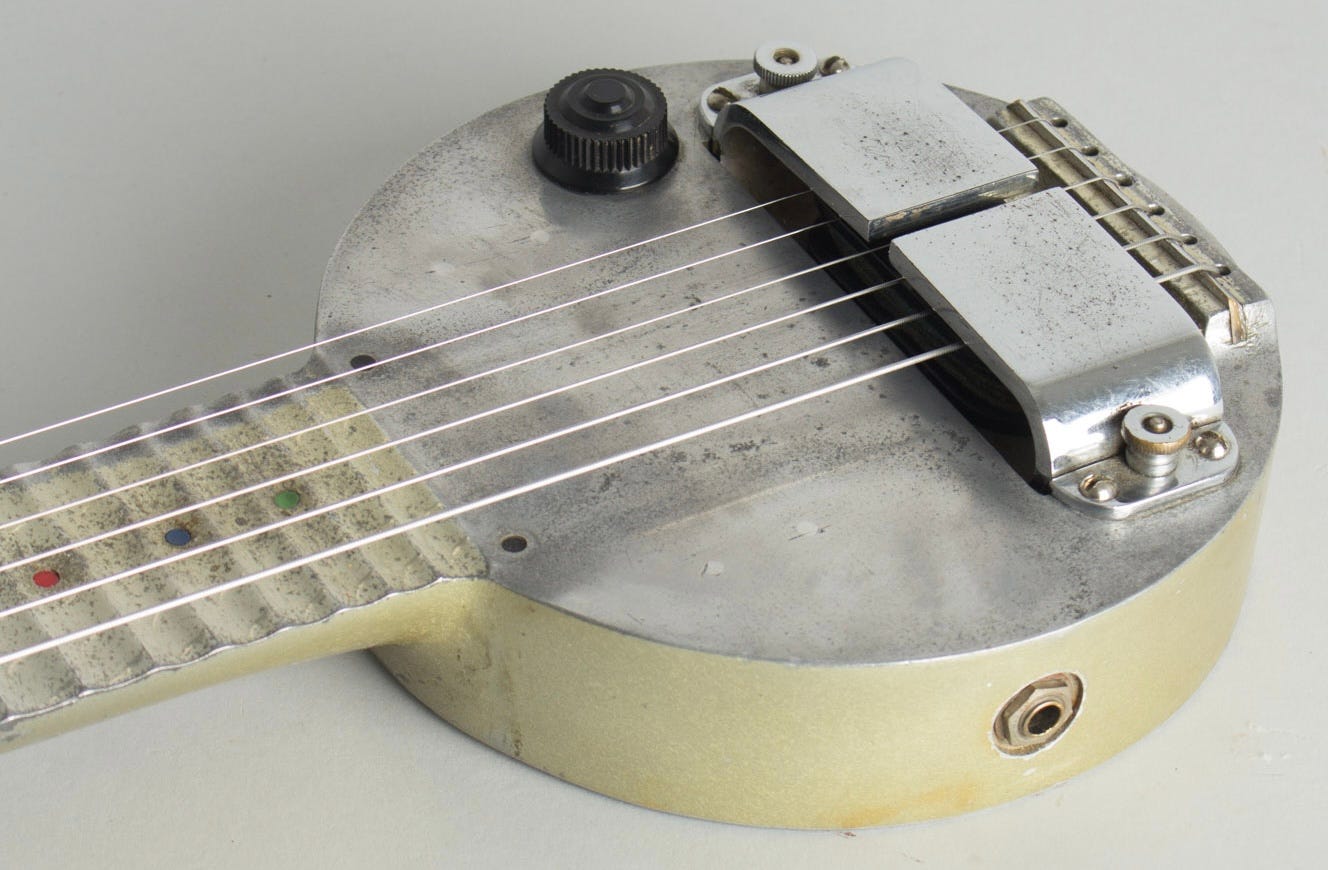
The basic formula was something like this: some sort of frame that attached to the face of the guitar with holes for the height adjusting screws that threaded into the pickup’s base to slot through. So the pickup wasn’t attached directly to the body—it was attached to a frame that was attached to the body. By 1945 this frame had more or less taken the shape we recognize today—although this example also incorporates the bridge!
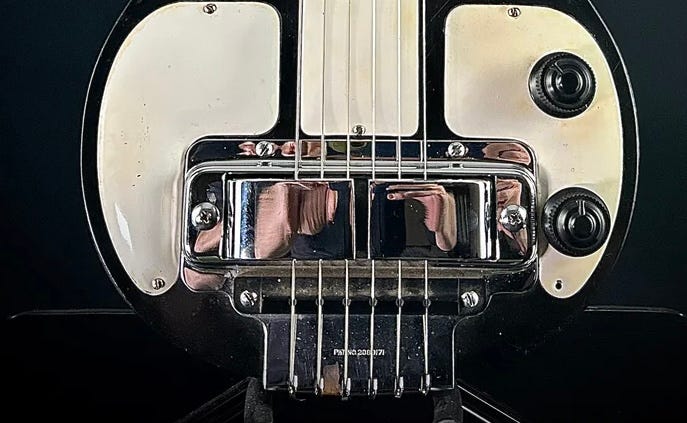
The very first “modern” Rickenbacker guitars, 1954’s Combo 600 and 800, had something very similar to what had come before—and what we’ve already seen on the first 4000s.
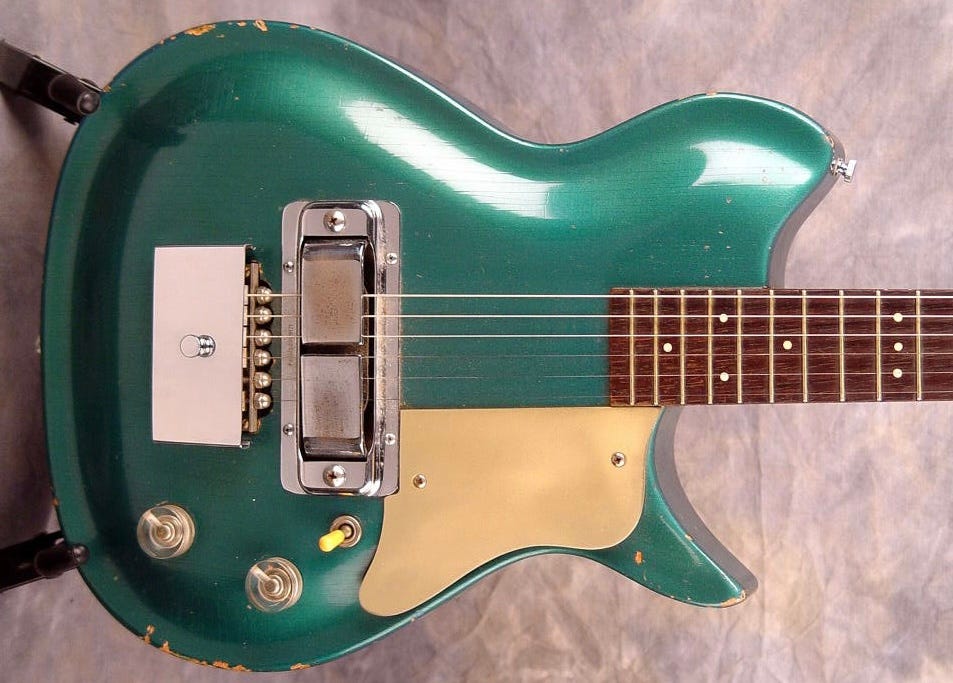
So that’s why the pickup surround exists. So why did it continue to exist after the Higain replaced the horseshoe? The Higain didn’t NEED that big aluminum base the horseshoe did..but it used it anyway. Look at this picture of an early Higain pickup equipped 4001 with the cover removed:
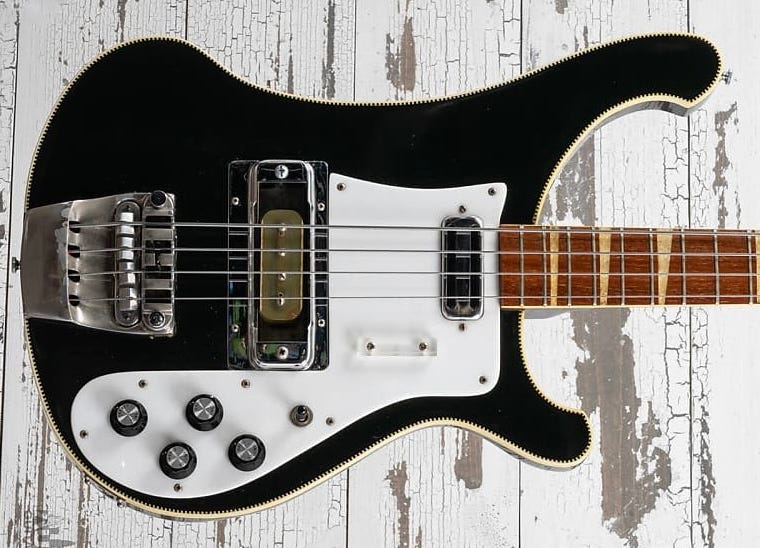
The “actual” Higain pickup is more or less the exact same size as the toaster pickup at the neck! Yet it still has the big aluminum baseplate and the whole pickup surround contraption to adjust it. And then they covered the whole thing up with a—let’s be honest—purely cosmetic cover of the sort all the competition was eliminating. Why? For the love of god, why?
Don’t let anybody sell you a “shielding” bill of goods. That’s bull. They did it like that because that’s just how they did it. They liked the way it worked, they liked the way it looked, they liked the fact they didn’t have to change the way they made it. They did it because they knew they “needed” a better pickup, and rather than making the design fit the pickup they made the pickup fit the design. They did it because inertia is a bitch.
And here’s the funny thing: somewhere along the way we all convinced ourselves it was good. Unique? Yup. Distinctive? Sure. A signature design element? Absolutely. A GOOD design element? It does nothing useful and it gets in the way. So no.
Okay, sure, plenty of (most?) people remove the pickup cover because it gets in the way. But nobody ever questions the completely superfluous pickup surround, because after sixty plus years that’s just how a Rickenbacker bass looks. We’d be angry if they took it away.
But even when you take the cover off it’s still not a great design if you play with your fingers. The pickup surround is right around where you want to anchor your thumb, and there’s a huge deep gap between the actual pickup and the edge of the surround EXACTLY where you want to put that thumb. Bad design! Bad!
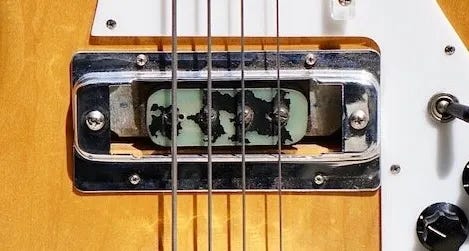
Around fifteen-ish(?) years ago a company called Tube Ampology came up with a pretty clever design they called the “treble bezel” to address this flaw.
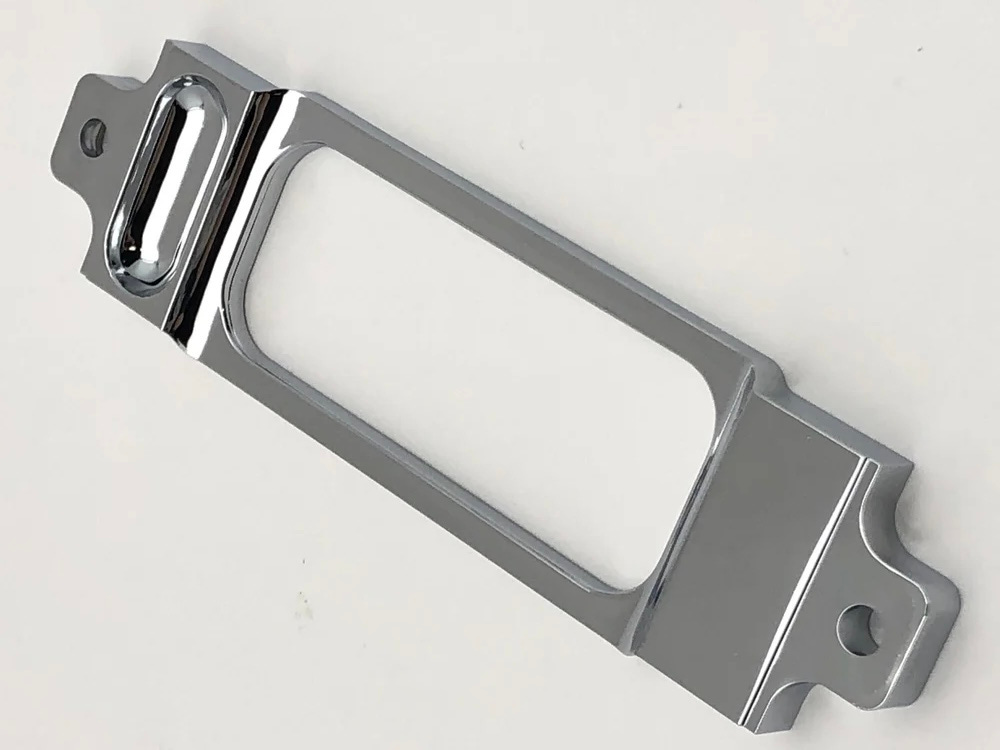
It’s mounted inside the gaping hole left when you remove the pickup cover, using the pickup’s height adjustment screws and springs. It fills the gap and gives your thumb a natural place to rest. You’ll see plenty of used 4001s and 4003s thusly equipped—it is a pretty handy solution to the inherent design flaw.
Before players realized they were in the way and took them off, there were actually two different versions of the chrome plated plastic cover over the years. The first ran from 1968 to about 1975 and it had “short legs”.
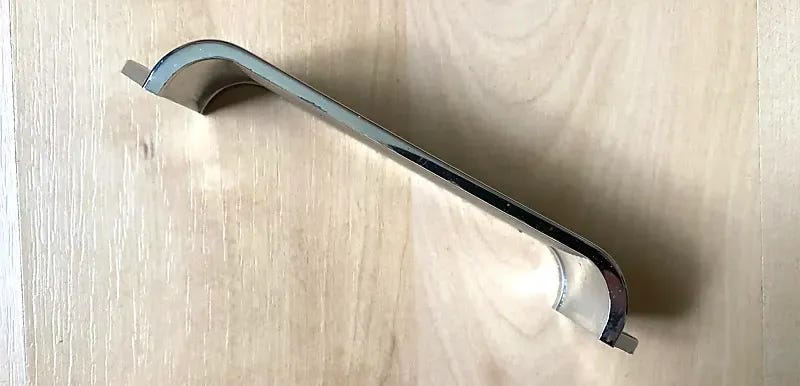
From around 1975 to 2025 it had “long legs”.
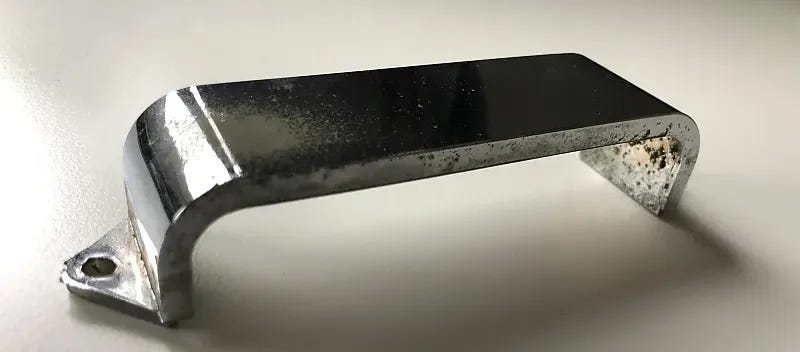
Why? How’d that work? It’s all about how it was mounted. The short leg version was mounted ABOVE the springs on the pickup height adjustment screws, so it pressed against the underside of the pickup surround and didn’t move as the pickup was raised and lowered. The long leg version was mounted BELOW the springs on the height adjustment screws, so it pressed against the base of the pickup and it raised and lowered as the pickup did. Why change? Hell, I can’t really tell you why it exists, so I darn sure can’t tell you why it changed!
But in early 2025 Rickenbacker finally listened to its consumers and completely redesigned a fundamentally flawed design…just kidding! They DID remove the pickup cover—which is good!—but instead of rethinking the whole pickup mounting mechanism they Frankensteined the existing pickup surround with Tube Ampology’s treble bezel design to create the “Bridge Pickup Assembly V2.”
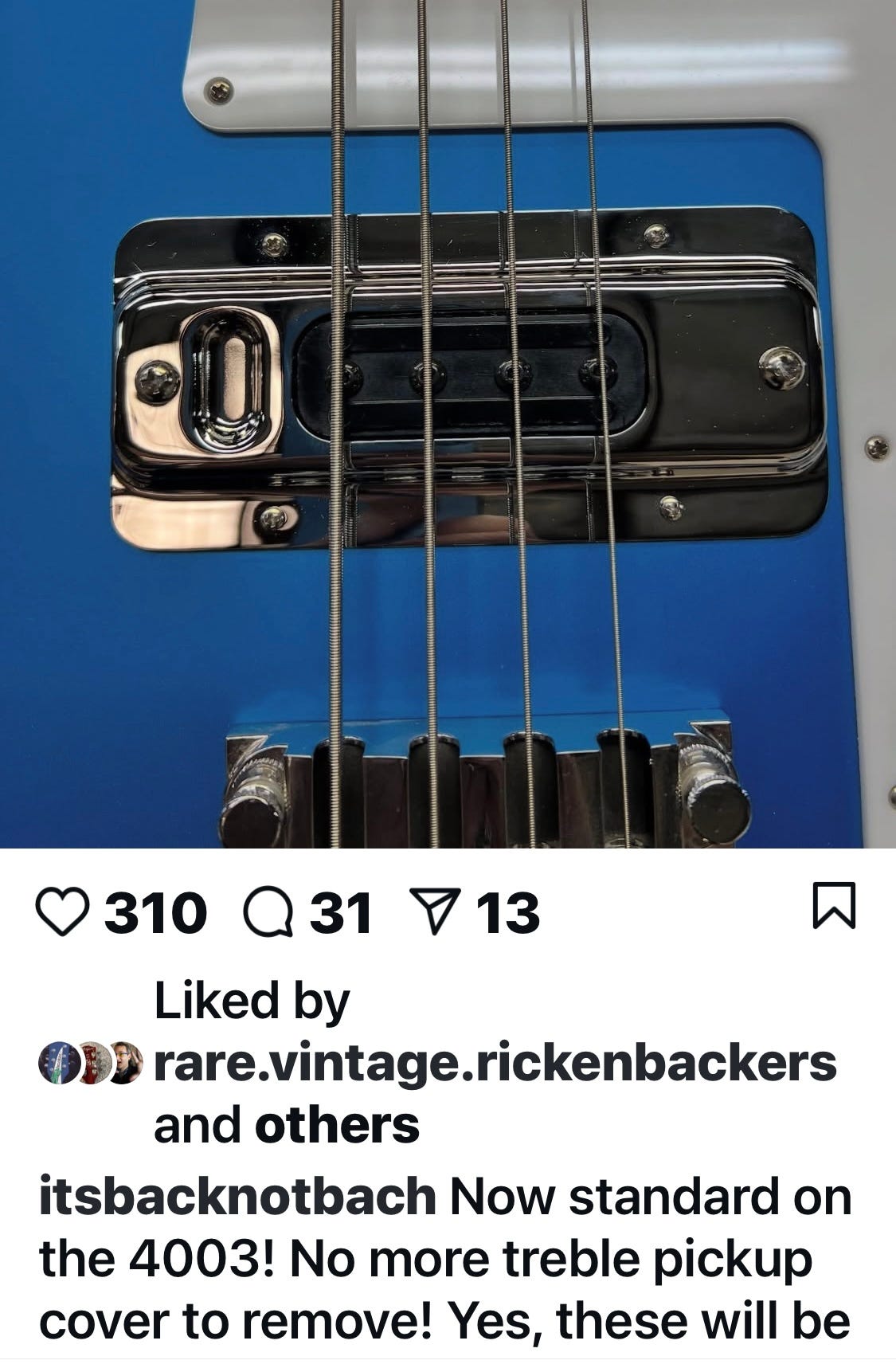
Was a missed opportunity to come up with a “better” overall design? Yeah, probably. But if we’re being honest they probably made fewer people mad by doing this than they would have with a complete redesign. They convinced us (or we convinced ourselves!) the design was good. Hey, like it or not that just IS how a Rickenbacker looks. Even if that’s due to inertia!
And that’s what there is to know about the bass guitar bridge pickup cover. There’s some pretty good pictures of all the various pickup surrounds you’re likely to find in our 4001 timeline article. And if you want to learn more about…everything else, check out our site map to see what we’ve already covered!


The Hi-gain pickups on 4001 series are different in that the neck pickup has a smaller rubber magnet and late 1960’s (?)/early 1970’s bridge pickups have a larger rubber magnet, two open holes on top and pickup mounted on aluminum stock instead of moulded black plastic.
I get it that a lot of people get rid of the pickup cover, but I make use of it. A lot of times I play above the neck PUP on my 4003 basses (I have 4) with my thumb braced against the side of the neck just at the heel.